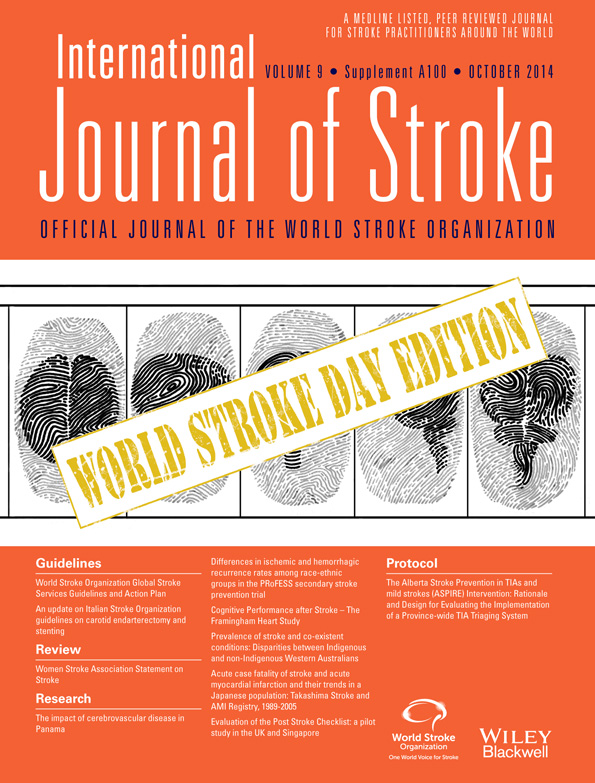The Alberta Stroke Prevention in TIAs and mild strokes (ASPIRE) intervention: rationale and design for evaluating the implementation of a province-wide TIA Triaging system
Abstract
Rationale
Stroke risk after transient ischaemic attack is high and, it is a challenge worldwide to provide urgent assessment and preventive services to entire populations.
Aims
To determine whether a province-wide transient ischaemic attack Triaging algorithm and transient ischaemic attack hotline (the Alberta Stroke Prevention in transient ischaemic attacks and mild strokes intervention) can reduce the rate of stroke recurrence following transient ischaemic attack across the population of Alberta, Canada (population 3·7 million, 90-day rate of post-stroke transient ischaemic attack currently 9·5%). It also seeks to improve upon current transient ischaemic attack triaging rules by incorporating time from symptom onset as a predictive variable.
Design
The transient ischaemic attack algorithm and hotline were developed with a broad consensus of clinicians, patients, policy-makers, and researchers and based on local adaptation of the work of others and research and insights developed within the province. Because neither patient-level nor region-level randomization was possible, we conducted a quasi-experimental design examining changes in the post-transient ischaemic attack rate of stroke recurrence before and after the 15-month implementation period using an interrupted time-series regression analysis. The design controls for changes in case-mix, co-interventions, and secular trends. A prospective transient ischaemic attack cohort will also be concurrently created with telephone follow-up at seven-days and 90 days as well as passive follow-up over the longer term using linkages to provincial healthcare administrative databases.
Study Outcomes
The primary outcome measure is the change in recurrence rate of stroke following transient ischaemic attack at seven-days and 90 days, comparing a period of two-years before vs. two-years after the intervention is implemented. All cases of recurrent stroke will be validated. Secondary outcomes include functional status, hospitalizations, morbidity, and mortality.
Conclusions
We are undertaking a rigorous evaluation of a population-based approach to improving quality of transient ischaemic attack care. Whether positive or negative, our work should provide important insights for all potential stakeholders.




